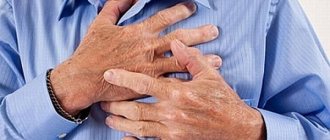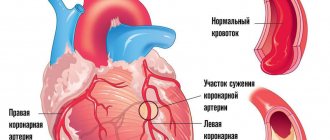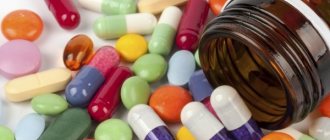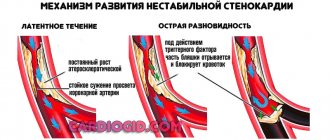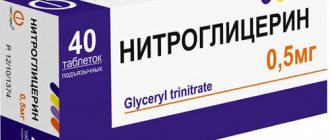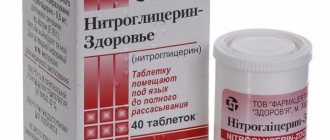In the article we will consider the indications for Nitrosorbide. It is used for the prevention and treatment of cardiac failure, myocardial infarction and angina in adult patients.
This drug can be used, which is its undoubted advantage, during pregnancy, but only from the second trimester and under the supervision of a doctor.
Peculiarities
According to the instructions for use, Nitrosorbide is a medication that can dilate small arteries and veins and affect vascular smooth muscles. While taking it, preload and afterload are reduced, which, in turn, reduces the need for oxygen in the heart muscle. An increase in the lumen of peripheral vessels helps to normalize blood circulation in the myocardium and its area subject to ischemia.
In addition, pressure in the pulmonary circulation decreases. As a result, patients with coronary artery disease experience an increase in the ability to tolerate physical stress. At the same time, in patients with cardiac failure, the load on the myocardium is significantly reduced.
“Nitrosorbide” is part of a group of pharmacological drugs that promote the production of nitric oxide in the smooth muscle layer of blood vessels, as well as the activation of a specific enzyme that has a relaxing effect on the veins, but does not affect the condition of the arteries.
Pharmacological properties
Pharmacodynamics.
Isosorbide dinitrate is one of the main antianginal agents from the group of organic nitrates, a peripheral vasodilator that primarily affects venous vessels.
Like all organic nitrates, isosorbide dinitrate acts as a nitric oxide (NO) donor. NO leads to relaxation of vascular smooth muscle (mainly veins and systemic arteries) by stimulating guanylate cyclase and further increasing the concentration of intracellular cyclic guanylate monophosphate (cGMP). As a result, cGMP-dependent protein kinase is stimulated and the phosphorylation of various proteins in smooth muscle cells changes. This leads to dephosphorylation of myosin light chains and decreased contractility.
The effect of isosorbide dinitrate is associated with a decrease in myocardial oxygen demand due to a decrease in preload (dilation of peripheral veins and a decrease in blood flow to the right atrium) and afterload (reduction in total peripheral vascular resistance), as well as a direct coronary dilation effect. Isosorbide dinitrate promotes the redistribution of coronary blood circulation to areas with reduced blood supply. Increases tolerance to physical activity in patients with coronary heart disease and angina pectoris.
The use of isosorbide dinitrate improves coronary perfusion without the development of steal syndrome. Has a hypotensive effect. In severe forms of heart failure due to a decrease in the tone of peripheral venous vessels, the drug reduces the load on the heart, pressure in the vessels of the pulmonary circulation, and shortness of breath.
Pharmacokinetics.
Bioavailability after oral administration is 22% (first pass effect through the liver). The onset of action is noted after 15-40 minutes, the maximum effect develops after 1.5-2 hours, the total duration of action is 4-6 hours or more. Metabolized in the liver. The half-life is 4 hours; it may be extended during course use of the drug. It is excreted almost entirely in the urine as metabolites.
Clinical characteristics.
Pharmacological forms
The manufacturer produces the medication in several pharmacological forms. Among them:
- Tablets "Nitrosorbide", the dosage of which can be 10 mg and 20 mg.
- Ointment.
- Spray for sublingual use.
- Films intended for gluing to gums.
- Capsules with prolonged effects.
- Concentrate used to make an infusion solution.
As the instructions for use for Nitrosorbide indicate, storage of any form of the drug should not exceed 2 years. The product should be in a dark place, and the temperature range should be 8-15 degrees Celsius.
The average cost of a tablet drug in Russian pharmacies is about 25 rubles. Other pharmacological forms are quite rare, so their cost must be checked with pharmacists.
Other forms of Nitrosorbide
Today, the following forms of medication can be purchased in the pharmacy chain:
- Spray - it is injected onto the tissues of the mouth, while simultaneously delaying respiratory activity. 1–3 injections are allowed, at equal intervals of up to 30 seconds. If there is no therapeutic effect, the instructions allow you to repeat the manipulations. Before the catheterization procedure, in order to prevent coronary spasm, it is recommended to perform 2 injections.
- Solution for parenteral administration - a liquid containing isosorbide dinitrate can be administered intravenously by drip, at an average permissible rate of 4 drops/minute. Dose calculation: 0.1 mg per ml. The maximum permitted rate of administration is 33 drops/minute.
- With the buccal method, plates with the active substance are glued to the surface of the gums - at the level of small incisors or incisors. The sides must be alternated.
- Spray for spraying onto the surface of the skin - spraying is carried out at a distance of no more than 20 cm. Then it is recommended to rub the contents with your fingertips.
- Ointment - applied twice a day in a dose of 1 g to the abdominal area, the inner part of the forearms, and the chest area. Recommended application area is 20 cm2.
By
Pharmacological effects
In accordance with the instructions for use, Nitrosorbide is capable of having vasodilating, coronary dilating, vasodilating, and antianginal effects. Under its influence, the oxygen demand of the myocardium and the load on the vascular walls are reduced. In addition, a redistribution of blood flow occurs in the area where blood supply is reduced. The medication is effective if the patient has increased pressure in the pulmonary circulation. What is the mechanism of action of Nitrosorbide?
Under the influence of a drug:
- Blood flow increases to the area where circulation is reduced. In this regard, patients suffering from coronary artery disease and angina pectoris have an increased ability to tolerate physical activity.
- There is an expansion of blood vessels located in the brain.
- Symptoms of pulmonary edema regress.
- The final volume of the left ventricle decreases, as well as the systolic tension in its walls, resulting in a decrease in the oxygen demand of the myocardium.
- The production of nitric oxide is stimulated, which can stimulate the activation of guanylate cyclase inside the cell, which increases the amount of guanidine monophosphoric acid that relaxes the smooth muscle layers of blood vessels.
After taking Nitrosorbide tablets, the active components enter the liver tissue. The highest concentration is observed after an hour. If the drug is used buccally, its absorption occurs instantly, and it penetrates into the blood plasma within 5 minutes.
Isosorbide dinitrate is metabolized in liver tissue and in the intestines. As a result, two metabolites are formed: isosorbide-2-mononitrate, isosorbide-5-mononitrate. They are excreted by the kidneys and intestines.
Application Features
The drug should not be used to eliminate attacks of angina pectoris.
When using the drug, cases of the development of tolerance and cross-tolerance to other nitrates have been described. To prevent reduction or loss of effect, long-term use of large doses should be avoided. In case of “nitrate” tolerance, it is recommended to discontinue Nitrosorbide for 24-48 hours or after 3-6 weeks of regular use, take a break for 3-5 days, replacing Nitrosorbide with other antianginal drugs during this time. Patients should be cautioned that the antianginal effect of isosorbide dinitrate is closely related to its dosage regimen and therefore the suggested dosage schedule should be carefully followed.
The drug should be prescribed with caution to patients with a tendency to orthostatic reactions, with hypothyroidism, hypothermia, malnutrition, as well as elderly patients, taking into account age-related changes in liver, kidney and heart function, concomitant diseases and the use of other medications.
During treatment, especially with a gradual increase in dose, monitoring of blood pressure and heart rate is necessary.
Nitrosorbide should be discontinued by gradually reducing the dose.
To prevent arterial hypotension and “nitrate” headaches, treatment should begin with a minimum dose. It is possible to use aspirin and/or acetaminophen to reduce isosorbide dinitrate-induced headache without negatively affecting the antianginal effect of isosorbide dinitrate.
Treatment with the drug may cause the development of orthostatic reactions, which more often occur with the simultaneous use of alcohol or other vasodilators. During treatment with Nitrosorbide, you should refrain from drinking alcohol.
Patients with glucose-6-phosphate dehydrogenase deficiency may develop acute hemolysis (favism) when using isosorbide dinitrate.
Taking isosorbide dinitrate may interfere with colorimetric cholesterol determinations.
Patients on maintenance therapy with the drug should be informed that they should not take drugs containing phosphodiesterase inhibitors (for example, sildenafil, tadalafil, vardenafil) due to the risk of developing uncontrolled hypotension.
In patients with angle-closure glaucoma, intraocular pressure may increase.
The drug contains lactose, so its use is contraindicated in patients with rare hereditary conditions such as galactose intolerance, lactase deficiency, and glucose-galactose malabsorption syndrome.
Use during pregnancy or breastfeeding.
There is insufficient data on the safety of isosorbide dinitrate during pregnancy. In the first trimester of pregnancy, the use of Nitrosorbide is contraindicated. In the II-III trimesters of pregnancy, it should be used only taking into account the ratio of expected benefit to the mother/potential risk to the fetus.
If it is necessary to use the drug, breastfeeding should be stopped.
The ability to influence the reaction rate when driving vehicles or other mechanisms.
Until the patient’s individual reaction to the drug is clarified, you should refrain from driving vehicles or other mechanisms, given that during treatment there may be a decrease in the ability to concentrate and the speed of psychomotor reactions, dizziness, and blurred vision.
Indications for use
As the instructions for use indicate, Nitrosorbide is indicated for use in the following cases:
- The external form of the drug is used as a prophylactic agent to reduce the number of periodic attacks of angina pectoris.
- Intravenous administration is indicated for acute myocardial infarction, which is complicated by left ventricular failure, unstable angina, and pulmonary edema.
- Oral, sublingual and buccal administration is indicated for the prevention and relief of angina attacks, during the recovery stage after myocardial infarction, in some forms of pulmonary hypertension, chronic heart failure, and in some forms of cor pulmonale.
- Inhalation use is recommended for the prevention and treatment of angina attacks, spasm of the coronary arteries (if a cardiac catheter is installed), myocardial infarction and left ventricular failure in acute periods.
Indications for Nitrosorbide must be strictly followed.
Nitrosorbide, instructions for use: method and dosage
Nitrosorbide tablets can be taken orally, buccally (in the cheek), or sublingually (under the tongue). In the case of oral administration, the tablets should be swallowed whole with a sufficient amount of water; for buccal and sublingual use, they should be kept in the mouth until completely dissolved.
The doctor determines the dose and duration of treatment individually depending on the clinical situation.
Recommended doses:
- Prevention of angina pectoris, as well as the recovery period after myocardial infarction: 1 tablet orally 3-4 times a day 30 minutes before meals. If necessary, the single dose is increased to 2-3 tablets. The maximum permissible daily dose is 180 mg of isosorbide dinitrate (18 tablets). If regular use of Nitrosorbide is undesirable, it is prescribed 1 tablet 30-40 minutes before the upcoming exercise;
- Chronic heart failure: 1-2 tablets orally 3-4 times a day;
- Pulmonary hypertension: 2 tablets 5-6 times a day before meals at regular intervals;
- Relieving an attack of angina: 1 tablet buccally or sublingually. To speed up the onset of the therapeutic effect, the tablet can be chewed and then held in the mouth until completely dissolved.
Usage
The method of use and dosage of the medication depends on its pharmacological form and indications:
- Nitrosorbide tablets are recommended to be taken an hour before meals, or 2 hours after that. Use the drug four or five times a day in an amount of 10-20 mg. If there are no significant improvements on the fifth day of therapy, experts recommend increasing the daily dosage to 120 mg. If the patient is prescribed complex therapy for CHF, three or four times the use of Nitrosorbide tablets in the initial dosage is indicated.
- When using Nitrosorbide sublingually, up to 3 injections into the oral cavity should be performed while breathing is held. The interval between injections should be about half a minute. If there is no improvement, injections should be repeated after 5 minutes. If the patient has an acute attack of angina pectoris, it is necessary to first chew and then swallow up to 5 mg of the medicine, that is, half the tablet.
- When using Nitrosorbide buccally, the drug plate must be glued to the upper jaw from the outside, in the area of the incisors. The plates are glued up to three times a day. It is necessary to alternate the gluing sides.
- When used perenterally, administration at the initial stage should be carried out at a rate of up to 4 drops per minute (if a dosage of 0.1 mg is used) and up to 2 drops per minute (if a dosage of 0.2 mg is used). After every five minutes, the speed should be increased by a couple of drops. The maximum permissible rate of administration is 17 drops per minute (at a dosage of 0.2 mg) and 33 drops per minute (at a dosage of 0.1 mg).
- When using an external spray, it is necessary to spray the skin in the heart area from a distance of 20 cm, and then rub the drug in with light movements. Do not apply more than two sprays per application, and do not wash the area for 20 minutes.
- TTS. Before installing the system, the area of skin must be cleaned of hair and wiped with alcohol. Remove the protective coating from the system and press its sticky side onto the prepared area of skin. It is recommended to use a dosage of 0.5-1 mg per square cm. One application lasts 12-24 hours. If necessary, it is possible to cut the system into several parts. Therapy is carried out over two weeks; it is important to avoid abrupt withdrawal of the medication.
- The ointment form of “Nitrosorbide” is used for application to the inside of the forearms, abdomen, and chest area. Application once or twice a day. It is recommended to use up to 1 mg, and the maximum area of the skin to which the ointment is applied should not exceed 20 cm2.
Similar drugs: which is better and cheaper?
Nitrosorbide has a fairly extensive list of generic drugs. Despite the fact that the original has a more than acceptable cost, many prefer to replace it with products with fewer contraindications and side effects.
Among the best analogues of Nitrosorbide, experts highlight Cardiket, Isosorbide, Monocinque, Molsidomin, Pectrol and Trimetazidine. To understand which one is better and cheaper, you need to become more familiar with their composition and action.
Cardiket
Cardiket is a Belgian drug that has a composition similar to Nitrosorbide. Belongs to the group of peripheral vasodilators, has a hypotensive and antianginal effect on venous vessels. Prescribed for heart failure and hypertension. It can be used in the complex treatment of patients after a heart attack, and is also used in the prevention of angina attacks.
Cardiket is not intended for the treatment of the acute stage of infarction, severe arterial hypertension and acute circulatory failure. May be prescribed with caution during pregnancy. If it is necessary to prescribe Kardiket during lactation, breastfeeding should be suspended.
Isosorbide dinitrate
Available in tablet form. A tablet is prescribed every 8 hours. For some patients, the dosage may be reduced according to the doctor's recommendation (up to twice a day). The drug should be taken only after meals, not on an empty stomach. Drink plenty of liquid. The cost of Cardiket is presented in the table (Table 2). Dispensed from pharmacies strictly according to a doctor's prescription.
Table 2 – Cost of Cardiket
| Content of the main active ingredient, mg | Number of tablets per package, pcs. | approximate cost |
| 20 | 20 | 65 |
| 20 | 50 | 130 |
| 40 | 20 | 115 |
| 40 | 50 | 220 |
Isosorbide dinitrate
Isosorbide dinitrate, based on the active ingredient of the same name, is available in the form of tablets, capsules, cream and aerosol. Prescribed for angina pectoris, myocardial infarction, chronic heart failure. It is prohibited for use in the acute phase of a heart attack, severe hypotension, or the body’s immunity to the composition of the drug.
Combining the medication with antidepressants and alcoholic beverages is unacceptable. There is a high risk of a sharp decrease in blood pressure to critical limits.
Method of use:
Aerosol. Shake the can, hold your breath, make 2-3 injections (with an interval of 20-30 seconds). If there is no rapid therapeutic effect, repeat the procedure after 5 minutes.- Pills. Depending on the patient’s diagnosis and age, possible treatment options:
- one tablet (20 mg) twice or thrice a day;
- one tablet (60 mg) no more than 2 times a day.
2 tablets (40 mg) twice a day;
At the discretion of the doctor, the dosage may be gradually increased.
The cost of the drug differs depending on the form of release, dosage and region of sale. For example, 30 tablets of 20 mg can be purchased for about 65 rubles, 30 tablets of 40 mg - within 120 rubles.
Monocinque
Monocinque is a German-made medicine. It has a composition identical to Nitrosorbide. Belongs to the group of vasodilating drugs, has an antianginal and vasodilating effect.
It is prescribed to patients who have had a heart attack, and also as a prophylactic agent to relieve angina attacks. Experts often include Monocinque as part of complex therapy in the treatment of chronic heart failure.
Contraindicated for:
- anemia;
- toxic pulmonary edema;
- acute form of heart attack;
- cardiogenic shock;
- hypotension.
There are age restrictions (up to 18 years). On the recommendation of a doctor, it can be prescribed in a minimum dosage to pregnant and lactating women.
It goes on sale in tablet form. At the initial stage of treatment, a tablet is prescribed no more than 2 times a day. Gradually, the dosage can be increased according to the recommendation of a specialist. Price – within 180 rubles for 30 tablets of 40 mg.
Molsidomin
Molsidomine is a peripheral vasodilator and cardiovascular drug. The main active ingredient is molsidomine. Allows you to dilate blood vessels, reduce the tone of peripheral veins, and reduce venous flow to the heart muscle.
It is used primarily as an anti-ischemic, anti-anginal agent in the prevention and relief of angina attacks. Prescribed in the complex treatment of cardiopulmonary failure.
Contraindicated in cases of pronounced hypotension and cardiogenic shock. Approved for use in the treatment of pregnant women, but only from the second trimester. When prescribed during lactation, breastfeeding should be suspended.
Laughter reception:
- orally: one tablet 2 to 4 times a day (for some patients the dosage can be reduced to 1/2 tablet 2-3 times a day);
- under the tongue: half a tablet up to 3 times a day.
When taking the drug sublingually, the therapeutic effect occurs within 5 minutes, when taken orally - within 20 minutes. The approximate cost of 30 tablets is 150 rubles.
Pectrol
Pectrol is another vasodilating drug produced in Slovenia, with a composition identical to Nitrosorbide. Prescribed to patients with ischemia, angina and chronic heart failure. Contraindicated only in case of individual immunity of the body to the components of the composition and in case of hypotension.
Available in the form of tablets of 40 and 60 mg. You need to take one 40 mg tablet per day, in the morning (preferably immediately after a meal). Do not bite or chew, drink plenty of water.
Gradually, the dosage can be increased to 60 mg once a day or 2 tablets of 40 mg twice a day. You can purchase the drug for about 175 rubles (30 tablets of 40 mg) or 240 rubles (30 tablets of 60 mg).
Trimetazidine
Trimetazidine is a Russian analogue, which contains the active ingredient trimetazidine of the same name. It has an antihypoxic effect and is prescribed for ischemia, to prevent angina attacks, for vascular pathologies of a chorioretinal nature, dizziness and vestibular disorders.
The drug is contraindicated for liver and kidney diseases, hypersensitivity to the components of the composition, and pregnancy. It is not recommended to prescribe Trimetazidine to children and adolescents under 18 years of age.
In rare cases, medication may be taken during lactation. However, during the treatment period it is necessary to stop breastfeeding.
The medicine is available in tablet form. The optimal dosage is one tablet twice or thrice a day. The cost of Trimetazidine depends on the manufacturing company.
For example, Trimetazidine from the pharmaceutical company Ozone can be purchased for an average of 80 rubles (for 60 tablets of 20 mg). A similar dosage from Teva will cost approximately 240 rubles.
It should be noted that Nitrosorbide has no competitors in terms of pricing policy; it is the cheapest medicine among numerous analogues. As for the action of generics, the closest to the effect of Nitrosorbide is Isosorbide.
Contraindications for use
The main contraindication to the use of Nitrosaorbide, like any other medication, is the presence of individual susceptibility to any of the components included in its composition, as well as to any nitrates. In addition, Nitrosorbide should not be used in the following situations:
- In childhood and adolescence.
- With a deficiency of glucose-6-phosphate dehydrogenase.
- In the first trimester of pregnancy.
- During lactation.
- For hyperthyroidism.
- If you have recently suffered a head injury or hemorrhagic stroke.
- With primary pulmonary hypertension.
- For hypertrophic obstructive cardiomyopathy.
- With cardiogenic shock.
- For anemia.
- With vascular collapse.
- For stenosis of the aortic or mitral valves.
- In case of cardiac failure accompanied by low pressure when filling the left ventricle.
- In acute myocardial infarction.
- With pulmonary edema of a toxic nature.
- When the patient has a blood pressure level below 100 mm. rt. Art., that is, with arterial hypotension.
- With impaired blood circulation in the brain.
- For angle-closure glaucoma.
- With high intracranial pressure.
Nitrosorbide should be used with extreme caution if the patient has diseases that can increase intracranial pressure, mitral or aortic stenosis, orthostatic hypotension, cardiac tamponade, subaortic stenosis, pericarditis.
Contraindications
Contraindications vary depending on the form of release and the method of administration of the drug into the body. Nitrosorbide is not recommended for use in case of hypersensitivity to the active substance or other nitro-containing or vasodilating drugs.
The drug should not be used in acute circulatory disorders. This condition can be caused, for example, by allergic shock or myocardial failure. If you have very low blood pressure, the use of nitrosorbide is strictly prohibited.
If the patient is treated with drugs from the group of phosphodiesterase-5 inhibitors for erectile dysfunction, then nitrosorbide should also not be used.
Phosphodiesterase
The active ingredient in the form of patches, capsules or syrups is not suitable for the treatment of acute heart disease.
Pregnancy and lactation
There is still insufficient clinical data on the safety of nitrosorbide in pregnant women. There have been no studies done to determine whether nitrosorbide passes into breast milk. Therefore, for reasons of caution, nitrosorbide can be used during pregnancy and lactation only after a thorough harm/benefit assessment under the guidance of a physician.
The medication is prohibited for use in children under 16 years of age.
Side effects of Nitrosorbide
The following negative effects may develop while using the drug:
- Brain ischemia.
- Slight burning of tongue.
- Headache.
- Feeling hot.
- Increased angina attacks.
- Dry mouth.
- Blurred vision.
- Drowsiness.
- Arterial hypotension.
- Tachycardia.
- Nausea, vomiting.
- Collapse.
- Dizziness.
If these adverse reactions develop, you should visit a doctor.
Below we will consider analogs and substitutes of Nitrosorbide.
Overdose
Symptoms of an overdose of Nitrosorbide are: fainting, headache, tachycardia, orthostatic hypotension, convulsions, increased body temperature. With excessively high dosages of the drug, methemoglobinemia with cyanosis of the lips and nails, difficulty breathing, arrhythmia, weakness, and hyperthermia may develop.
In case of overdose, symptomatic treatment is recommended. In case of severe overdose, dopamine should be administered and sympathomimetic drugs should be used. If the drug was taken orally, and no more than half an hour has passed after administration, gastric lavage is indicated, followed by the intake of activated charcoal. To correct blood pressure, it is necessary to adjust the volume of circulating blood.
Analogs
The most popular analogues of this drug are: “Efox Long”, “Erinit”, “Sustonit”, “Sustak Mite”, “Sidnopharm”, “Pentakard”, “Nitrosprint”, “Nitrosorbide Rusfar”, “Nitrong Forte”, “Nitrolong” , “Nitroglycerin”, “Monocinque retard”, “Monosan”, “Mononit”, “Mono Mac”, “Carniland”, “Cardiket”, “Isosorbide dinitrate”, “Isoket”, “Dinisorb”, “Deponit 10”. They should be selected by a doctor.
Compound
active ingredient:
isosorbide dinitrate;
1 tablet contains isosorbide dinitrate in the form of diluted isosorbide dinitrate (in terms of 100% and dry matter) - 10 mg;
Excipients:
lactose monohydrate, crospovidone, calcium stearate.
Dosage form.
Pills.
Basic physical and chemical properties:
round tablets with a flat surface, with beveled edges, white.
Pharmacotherapeutic group.
Cardiac drugs.
Vasodilators used in cardiology. Isosorbide dinitrate. ATX code
C01D A08.
Reviews
Patients who have used Nitrosorbide speak extremely positively about it. Its effectiveness as a vasodilator and antianginal agent is separately noted. The undoubted advantage is the low cost of the medication; it is available to every patient. However, you should take the medicine only as prescribed by a specialist. If all recommendations are followed, the risk of developing negative effects is minimized.
We looked at the instructions for the drug "Nitrosorbide", what the medicine helps with and how to use it.
Drug interactions
Nitrosorbide is contraindicated for use simultaneously with sildenafil (Viagra) due to the risk of severe arterial hypotension and myocardial infarction.
Ethanol, peripheral vasodilators, antihypertensive agents, calcium channel blockers, tricyclic antidepressants, antipsychotics, PED inhibitors, beta-blockers enhance the hypotensive effect of isosorbide dinitrate.
Sympathomimetics reduce the antianginal effect of Nitrosorbide.
Adsorbents, coatings and astringents reduce the absorption of isosorbide dinitrate in the gastrointestinal tract.
Nitrosorbide increases the plasma concentration and therapeutic effect of dihydroergotamine.
Nitrosorbide at pressure
- 1 Composition of the drug and form
- 2 Mechanism of action of the drug
- 3 In what cases is Nitrosorbide prescribed?
- 4 Instructions for using the medicine 4.1 Contraindications to the use of Nitrosorbide for blood pressure
- 4.2 Adverse events
Have you been struggling with HYPERTENSION for many years without success?
Head of the Institute: “You will be amazed at how easy it is to cure hypertension by taking it every day...
Read more "
Nitrosorbide is one of the most commonly used drugs to reduce blood pressure and relieve angina attacks. In addition, this medication is also able to combat the manifestations of heart failure and pulmonary hypertension (increased pressure in the pulmonary circulation). In accordance with the instructions, in some situations this drug can be prescribed as a component of complex treatment for arterial hypertension (high blood pressure).
Composition of the drug and form
The active component of the drug "Nitrosorbide" is the substance isosorbide dinitrate. This medication is available in tablet form. Additionally, it contains special forming substances that are responsible for the acceptable appearance of the drug and the shelf life. Nitrosorbide is produced in a dosage of 10 mg (0.01 g), available in packages of 40 or 50 tablets.
on
Return to contents
Mechanism of action of the drug
Thanks to the drug, blood circulation in the heart improves and blood pressure decreases.
According to the instructions, isosorbide dinitrate belongs to the pharmacological group of nitrate antianginal (aimed at treating angina) medications. The mechanism of action of this medicinal substance is its effect on the wall, usually of venous vessels. Due to the action of this substance on the vascular wall, the lumen of the vessels expands, as a result of which blood circulation improves and the level of pressure in the pulmonary circulation decreases. In addition, thanks to this effect, blood circulation in the heart muscle improves and angina attacks are stopped. Isosorbide dinitrate helps to lower diastolic pressure in the cardiac ventricles, and also, to a much lesser extent, temporarily lowers the level of systemic mean arterial pressure.
Return to contents
In what cases is Nitrosorbide prescribed?
The drug "Nitrosorbide" is recommended for use in the following situations:
- treatment and preventive therapy of angina attacks of various origins;
- component of complex treatment of chronic congestive heart failure and pulmonary hypertension;
- element of the therapeutic complex during the rehabilitation period after myocardial infarction.
Return to contents
Instructions for using the medicine
According to the instructions and prescriptions of the doctor, the medicine should be taken half an hour before meals with water or placed under the tongue.
The approved instructions for the use of Nitrosorbide stipulate that the dosage volume and duration of the therapy period are determined by the attending physician for the individual patient on an individual basis. Generally, the recommended dosage of this drug is 10 mg or 20 mg 3 or 4 times a day. According to the instructions, this medicine should be taken half an hour before meals with a sufficient amount of water. The drug "Nitrosorbide" can also be taken sublingually (under the tongue). In the case of treatment of chronic heart failure and concomitant high pressure in the pulmonary circulation, it is primarily necessary to monitor hemodynamics in order to determine the volume of the required dosage of the drug. The instructions indicate that for the treatment of elderly patients, the dose may be reduced.
Return to contents
Contraindications to the use of Nitrosorbide for blood pressure
The instructions for the drug "Nitrosorbide" prohibit its use in the following cases:
Why do you feed pharmacies if hypertension is afraid of the usual like fire...
Tabakov has revealed a unique remedy against hypertension! To reduce blood pressure while preserving blood vessels, add to…
- personal intolerance to isosorbide dinitrate, other nitro compounds or other components of the medication;
- excessive arterial hypotension when the pressure level is less than 90 mm Hg. Art.;
- collapse, shock, acute circulatory failure;
- acute course of myocardial infarction;
- angina due to hypertrophic cardiomyopathy;
- high intracranial pressure;
- stroke;
- lactase deficiency, galactose intolerance;
- angle-closure glaucoma;
- constrictive pericarditis, mitral or aortic stenosis, cardiac tamponade;
- pulmonary edema of toxic origin, primary lung pathologies;
- severe anemia;
- simultaneous use of drugs based on phosphodiesterase inhibitors (medicines based on sildenafil, tadafil);
- severe renal and/or liver failure;
- pregnancy (1st trimester) and breastfeeding;
- childhood.
Return to contents
Adverse events
In case of prolonged use of the drug "Nitrosorbide", the following side effects may develop:
- headaches, dizziness;
- changes in heart rate - tachycardia or bradycardia;
- arterial hypotension - excessive drop in blood pressure;
- facial redness, hot flashes, feeling of heat;
- peripheral edema;
- impaired concentration;
- dyspeptic disorders;
- allergic manifestations;
- “withdrawal” syndrome in case of abrupt cessation of medication;
- collapse, increased frequency of angina attacks, but in rare cases.
If any of the adverse events occur, you should contact your doctor as soon as possible.
Return to contents
Intercompatibility with other medications
Nitrosorbide is not recommended to be taken with other medications due to the risk of a drop in blood pressure.
Nitrosorbide should not be used simultaneously with drugs based on phosphodiesterase inhibitors due to the risk of a sharp and excessive drop in blood pressure. This medication should not be combined with other vasodilators (dilators that widen the vascular lumen). In addition, according to the official instructions, it is not recommended to drink alcohol-containing drinks while using this drug, since alcohol enhances the effects of isosorbide dinitrate.
Return to contents
Similar medicines
“Nitrosorbide” can be replaced with its analogues - medicines containing a similar active ingredient. The difference between them lies in the manufacturing company, trade name, and often in price and quality. Analogs of the drug “Nitrosorbide” are such medications as “Izo-Mik”, “Isoket”, “Kardiket Retard”, “Dikor Long”, “Izodinit”. It is prohibited to independently replace drugs. Only the attending physician can recommend replacing the drug.
on
A comment
Nickname




